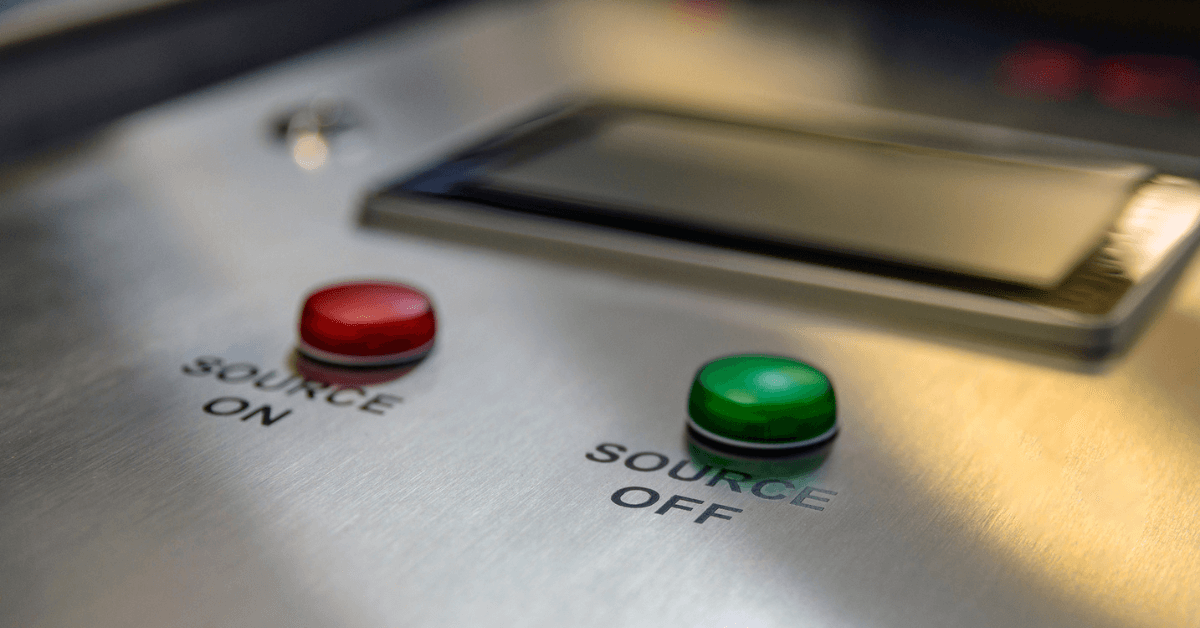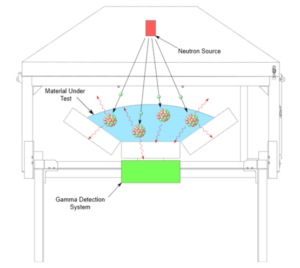
Elemental Analysis technology has evolved rapidly over the last decade and plays a critical part in mining operations, allowing plant operators to make decisions based on the composition of elements. The decline in ore quality, increasing material demand, rising production expenses, and evolving plant requirements underscore the importance of obtaining real-time elemental data to improve process control.
What Is PGNAA?
Prompt Gamma Neutron Activation Analysis (PGNAA) is internationally accepted as the preferred option for high performance on-line elemental analysis. In PGNAA, conveyed material on the feed stream is exposed to neutrons emitted from a radioactive isotope or neutron generator. It is a non-contact, non-destructive analytical technique that is widely used in mining industries to obtain information in real time on the composition and moisture content of coal, iron ore, copper, lithium and more.
How Does PGNAA Work?
PGNAA works by continually bombarding material with neutrons, either from a Californium 252 (Cf-252) source or from an electrical neutron generator. When neutrons collide with an element in the material, gamma rays are emitted with specific energies unique to that element – in effect creating a spectral signature for that element. The higher the concentration of an element in the material, the greater the number of gamma rays emitted with the corresponding specific energies. By measuring the specific energies of the emitted gamma rays and the intensity of each specific energy, an accurate analysis of the chemical elements of the material is generated in real-time.

The above diagram shows a typical neutron capture interaction on an atomic level. In this diagram, a neutron is absorbed by the target nucleus which is immediately followed by the emission of a gamma ray (a prompt gamma).
The Advantages Of PGNAA
Real Time Results
Material sampling through a laboratory can take between several hours, to a few days and even weeks. PGNAA provides access to results in real time, allowing operators to make accurate decisions to improve their operations.
Accurate Analysis
PGNAA analysers provide much more information than just ash or moisture, as they can also directly measure individual elements like Fe, Al, Si, K, S, Ti & Ca. These analysers also have a higher tolerance to changing coal types, eliminating the need for multiple calibrations.
Increases Material Value
By providing real time information on material composition, PGNAA analysers can be placed at any point in mining operations and consistently add value to the material.
Complete Measurement
PGNAA analysers can measure the entire cross section of material, unlike other spectral analysis techniques that only allow for surface areas and cuts. As it is penetrative, PGNAA is not affected by particle size, layering or dust.
PGNAA’s Role In Mining
Success in mining operations stems from having the most accurate information readily on hand. By providing accurate, real-time data on material composition before stockpiling or processing facilities mining operators can increase the product quality and reduce operation costs.
The value of material is constantly in flux from the moment it is extracted from the earth, as it is exposed to the elements and moisture. Placement of an analyser is critical for obtaining data at the right time, with typical PGNAA placed as early in the mining process as possible. Analysers are situated above the conveyor belts, allowing for constant scanning and measurement of material passing beneath. These belts have loadings upwards of 400kg/m and speeds exceeding 5m/s. This means that analysers need to be able to provide data and information quickly to ensure accurate decisions can be made.
PGNAA has seen successful implementation across the mining industry due to the large range of measurable elements including Fe, Al, SI, K, S, Ti, Ca and many more. The coal industry for example, benefits greatly from PGNAA analysers as the sensor can determine ash, moisture, and specific energy data. Without the use of an analyser, determining material composition requires waiting for laboratory results which can take 2-3 days for critical results.

The standard configuration of a PGNAA analyser, incorporating neutron interactions, is depicted above. In the illustration, there is a neutron source positioned above the material on a conveyor belt, continuously subjecting the material to neutron irradiation. A portion of these neutrons is absorbed by elements within the material, leading to the release of specific gamma rays during the neutron capture interaction. Some of these gamma rays penetrate the scintillation crystal beneath the belt, generating an electrical response that is then detected by the sensor. This detected response is utilized to deduce the elemental composition of the material.
PGNAA’s Edge Over Competitors
There are significant benefits for using PGNAA over its competitors as highlighted earlier in the article, but what are the other competing technologies and what helps separate PGNAA.
Surface Measurement Technologies
The main surface measurement technologies are Laser Induced Breakdown Spectroscopy (LIBS), X-Ray Fluorescence (XRF), Laser Induced Fluorescence (LIF) and Near InfraRed (NIR). Unfortunately, these methods are unable to penetrate the material beyond the surface, being more suited for material that is homogeneous, which is not often found on conveyor belts. PGNAA analysers provide a much wider range of applications, ensuring that operators can run despite material conditions.
Magnetic Resonance (MR) & X-Ray Transmission (XRT)
Both MR and XRT are not designed for elemental analysis, with MR having very limited applications and only the ability to measure chalcopyrite. XRT, on the other hand, measures relative molecular weight distribution through conveyed material.
